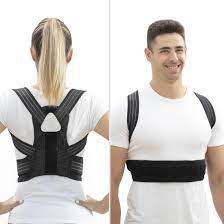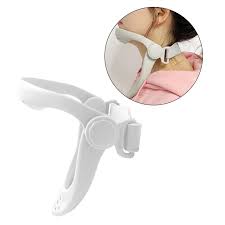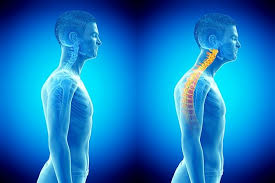

In today’s digital-heavy world, we are practically glued to screens — laptops, smartphones, tablets — and this constant connection comes at a cost: forward head posture (FHP).
This happens when your head gradually shifts forward, pulling your neck out of its natural alignment.
According to bestforwardheadposturefix research, “Over time, this misalignment can lead to neck stiffness, shoulder pain, headaches, and even long-term spinal issues”.
Thankfully, a range of forward head posture devices has emerged to help correct this problem. These tools retrain the neck and spine into healthier positions, supporting you as you break free from poor posture habits.
This article explores how these devices work, the different types available, and how they can be used effectively in daily life to improve neck alignment.
Article Index
- Understanding Forward Head Posture
- Best Neck Brace for Forward Head Posture
- Smart Posture Corrector for Neck Alignment
- Cervical Traction Device Benefits
- How to Fix Tech Neck with Devices
- Posture Corrector Brace for Neck and Shoulders
- Neck Alignment Exercises with Devices
- Forward Head Posture Correction Tools
- FAQs on Posture Device for Neck Alignment
- Conclusion
Understanding Ned Neck Posture
Forward head posture is not just a cosmetic issue — it is a mechanical one.
When your head moves forward just a couple of inches, the load on your cervical spine can double or even triple. This creates excessive strain on the neck muscles, compresses the cervical discs, and weakens the supportive ligaments.
Common culprits behind FHP include long hours at the computer, looking down at phones, or even bad sleeping positions.
If left unchecked, this posture can trigger tension headaches, shoulder stiffness, nerve compression, and reduced lung capacity. This is where posture devices come in, offering structured support to guide the neck and spine back into alignment.
Best Neck Brace for Forward Head Posture
When searching for help, many people look for the best neck brace for forward head posture, hoping it will be the magic fix.
These braces are specially designed to provide firm yet gentle support to the cervical spine, keeping your head properly aligned over your shoulders — a crucial factor in reducing the stress on overstretched neck muscles.
Unlike the soft foam collars often used after injuries or surgeries, these posture-focused braces are intended for intermittent daytime use rather than continuous wear.
Clinical research shows that when a properly fitted neck brace is combined with targeted posture exercises, individuals can experience a notable reduction in neck discomfort, improved range of motion, and even less fatigue during desk work or screen time.
However, it is essential to remember that a brace is a tool, not a permanent solution.
Overusing it can cause muscle weakening or dependency, so balance is key: wear the brace wisely while actively working on strengthening your postural muscles.
Smart Posture Corrector for Neck Alignment
Tech has taken posture correction up a notch with devices like the smart posture corrector for neck alignment — and they are changing the game for anyone battling “tech neck.”
These small, lightweight wearables are typically placed on the upper back or shoulders, where they monitor your alignment throughout the day.
When they detect that you are starting to slouch or jut your head forward, they gently vibrate, serving as a subtle reminder to straighten up and realign.
Many smart correctors also sync with smartphone apps, allowing you to track your posture habits over time, view progress reports, and access customized exercise recommendations.
This combination of real-time feedback and long-term tracking helps build crucial postural awareness, something that bulky neck braces or one-off fixes can’t offer.
For people who thrive on data, gentle nudges, and tech-driven solutions, these smart posture correctors provide a high-tech way to actively retrain daily habits and support lasting improvements.
Cervical Traction Device Benefits
For those struggling with chronic neck tightness or advanced forward head posture (FHP), cervical traction devices offer an additional layer of therapeutic support that’s both practical and science-backed.
The key benefit of a cervical traction device lies in its ability to apply gentle, controlled stretching to the cervical spine, helping to relieve compressed nerves, increase intervertebral space, and decompress misaligned vertebrae.
Once limited to physical therapy clinics or chiropractor offices, today’s home-use models are compact, adjustable, and user-friendly, making this treatment accessible to many.
Studies published in journals like Spine and Journal of Orthopaedic & Sports Physical Therapy show that consistent use (typically 10–15 minutes a day) can reduce nerve-related neck pain, improve cervical range of motion, and enhance spinal alignment.
However, it is not a one-size-fits-all solution: improper setup or overuse can cause muscle strain, dizziness, or worsening symptoms.
That is why it is essential to follow manufacturer guidelines or consult a healthcare professional before starting.
How to Fix Tech Neck with Devices?
So, how to fix tech neck with devices?
Tech neck, the modern plague of forward head posture, stems largely from hours hunched over smartphones, tablets, and laptops. To tackle it effectively, you need more than just a gadget—you need a holistic strategy.
Start by combining posture devices, like smart posture correctors or cervical braces, with key lifestyle adjustments:
- Raise your screens to eye level to avoid constant downward tilting.
• Use ergonomic chairs that support a neutral spine and encourage proper alignment.
• Take movement breaks every 30 minutes to reset your posture and stretch tight muscles.
Research from ergonomic and musculoskeletal health studies shows that people who blend environmental changes (like workstation adjustments) with wearable posture aids experience significantly better improvement compared to using devices alone.
It is about building a complete, multifaceted system that reinforces good posture throughout the day, helping you break free from the tech neck trap.
Posture Corrector Brace for Neck and Shoulders
Another handy (and frankly, posture-saving) gadget is the posture corrector brace for neck and shoulders.
Think of it as a personal trainer for your upper body—minus the yelling. Unlike neck-only braces that just cradle your cervical spine, this wraparound wonder hugs your upper back and shoulders, gently pulling your shoulder blades together and nudging your head back where it belongs, right over your spine.
It is especially clutch for those battling not just tech neck, but also rounded shoulders and upper back tightness.
Why stop at fixing one area when you can realign the whole team?
Studies in physical therapy show that targeting the neck and shoulders helps recalibrate muscle patterns, reduce back tension, and build long-term postural awareness.
With consistent use (and maybe a few stretches), you’ll be standing taller, looking sharper, and leaving that slouched, desk-hunched version of yourself in the dust. Who knew posture correction could feel this smart?
Neck Alignment Exercises with Devices
No device works magic on its own — pairing posture devices with targeted neck alignment exercises is where the real transformation happens.
It’s like teaming up Batman and Robin: one provides the support, the other brings the muscle power.
Essential exercises include chin tucks, which strengthen those often-neglected deep neck flexors that help pull the head back into alignment; shoulder blade squeezes, which train the upper back to resist slumping forward; chest stretches, which loosen up the tight, overworked pectoral muscles pulling you into a hunched position; and wall angels, which fire up the upper back and shoulder stabilizers.
Research shows that combining these corrective exercises with devices leads to stronger, more durable postural improvements—not just temporary fixes that vanish the moment you unstrap a brace.
By training the muscles to actively support good posture, you build resilience and create a body that remembers how to stay aligned even without external help.
Forward Head Posture Correction Tools
There is no one-size-fits-all solution when it comes to forward head posture correction tools. For some, a basic posture brace does the trick, offering just enough support to remind the body how to align.
Others find greater success by layering in smart wearables that provide real-time feedback, cervical traction devices that gently decompress the spine, or structured exercise programs that retrain muscle patterns.
But here is the kicker: the most effective approach is not about picking just one. Research consistently shows that a multimodal strategy—combining devices, corrective exercises, workspace adjustments (like ergonomic chairs or elevated screens), and daily mindfulness—yields the most sustainable improvements.
This holistic system does not just fix your neck temporarily; it builds habits and muscle memory that reduce the risk of slipping back into old, slouched patterns.
Over time, this integrated approach supports not just better posture but improved overall spinal health, reduced pain, and even better breathing and focus.
FAQs on Posture Device for Neck Alignment
Q-1: How do real-time biofeedback wearables actually reduce “text-neck” while I work?
A-1: Tiny sensors on the chest or upper back track your neck angle and give a gentle buzz when you drift past a preset threshold. That cue prompts a quick reset—chin tucked, shoulders relaxed, ribcage stacked over pelvis.
Because feedback arrives in the moment, you correct dozens of small errors per hour. Set a generous alert (e.g., >20–25° flexion) so you’re coached, not nagged, and use it during your longest computer block.
Q-2: Do posture braces and taping just remind me, or can they change muscle patterns?
A-2: Both. Flexible braces and strategic taping reduce shoulder protraction and cue your mid-back to share the load, which can calm overactive upper traps and make chin-tucks feel easier.
The trick is dosing: wear 60–90 minutes a day for demanding tasks, then remove so your own muscles do the holding. Pair with brief drills—scapular setting, wall slides, and 5×5-second chin nods—to convert the “reminder” into new default mechanics.
Q-3: Why do some people still turtle toward the screen even with a device on?
A-3: Sightlines beat gadgets. If your monitor is low, off-center, or too far away, your eyes will drag your head forward no matter the cues.
Fix the environment first: center the screen, keep the top at or slightly below eye level, and sit an arm’s length away. Then the device can reinforce good alignment instead of fighting bad setup.
Q-4: What improves first—alignment or pain—and how should I measure progress?
A-4: Alignment changes fastest; pain usually follows with consistency. Track two metrics weekly: (1) a side photo showing ear-over-shoulder distance and (2) a 0–10 neck discomfort score.
If angles improve but pain stalls, add micro-breaks (60 seconds every 45 minutes), a short mobility block (cat-cow yoga pose, thoracic extension on a bench), and a strength trio (chin tucks, band pull-aparts, prone Y holds). Expect noticeable comfort gains in 2–4 weeks.
Q-5: Which device fits which problem—and how do I avoid over-reliance?
A-5:
Biofeedback wearables: best for desk marathons; set a forgiving threshold and use during peak focus windows.
Flexible braces/taping: great for tasks that provoke shrugging or forward head (intense typing, clinical procedures); phase out as control improves.
Hardware helpers (monitor arm, laptop riser): foundational; they remove the visual triggers causing neck protraction.
Treat any device like a coach, not a crutch: time-limit use, stack it with a two-minute posture routine, and re-test without the device after 2–4 weeks to confirm you’ve learned the pattern.
Conclusion
Forward head posture is a widespread challenge in our tech-centered world — but it is one we can actively address. Whether you choose the best neck brace for forward head posture, a smart posture corrector for neck alignment, or a cervical traction device, each tool provides a pathway to better alignment and reduced discomfort.
The key lies in combining these devices with strengthening exercises, regular movement, and smart ergonomics to achieve the best forward head posture fix.
If you are unsure where to start, consulting a healthcare provider can help you choose the right approach for your needs.
By taking proactive steps today, you are investing in your long-term neck health, boosting your confidence, and setting yourself up for a pain-free future. So why wait? Stand tall, realign, and reclaim your best posture!
References:

